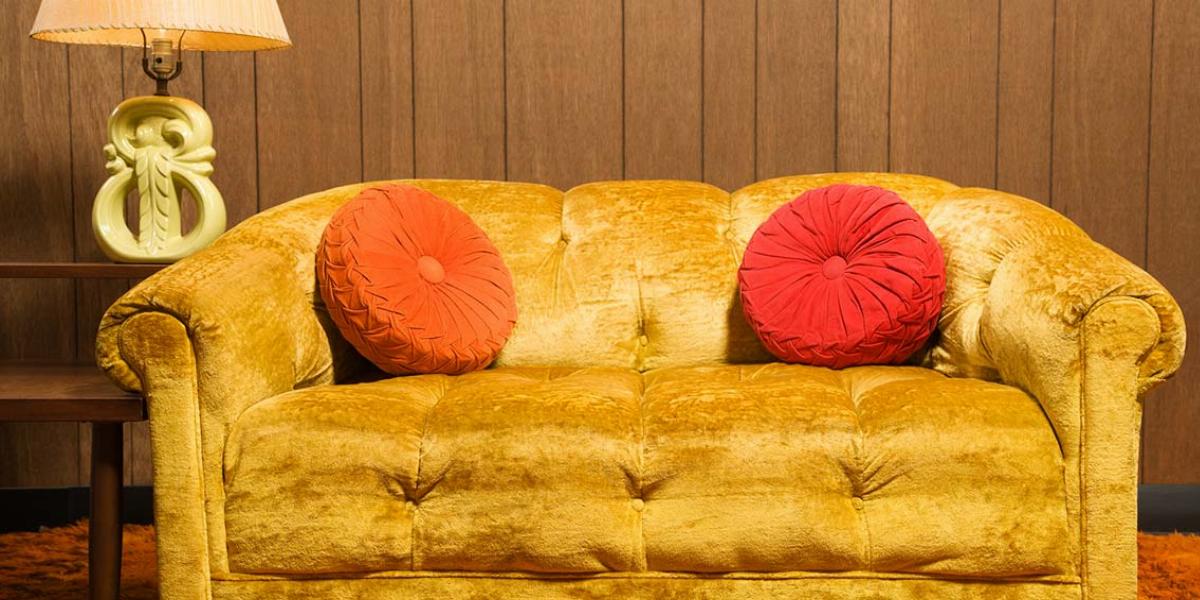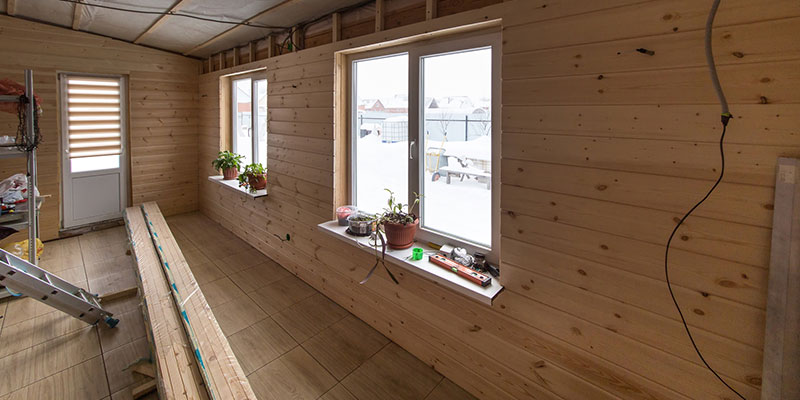
Ready for a simple update to your house that will make it look refreshed and brand new? Removing or replacing old wood paneling can be a low-cost way to do the trick. But there are some pitfalls to be aware of that could not only impact the price, but the amount of effort required. To help you ditch the wood-look, we spoke with Julian Pastin, Store Director at Rebuilding Exchange.
Project Prep | Check Behind Panels | Remove Panels | Other Options
Typically, removing wood paneling is a low-cost project, and could be as cheap as the tools you use. However, the cost can vary based on the type of paneling you’re dealing with and whether it’s attached to drywall or nailed directly to studs.
Pastin says that the three most common types of panels are shipboard (also called shiplap), tongue-and-groove and barn siding. Each have different characteristics and are attached to the wall in different ways, which can affect your removal costs.
|
|
|
|
|
Cost to remove depends on whether it’s attached with nails or panel glue:
Characteristics:
|
Tends to be the cheapest to remove. Characteristics:
|
Cost to remove depends on how it is attached:
Characteristics
|
|
|
|
|
|
As with any project, make sure you have the right equipment beforehand. Here’s a quick list of the tools you’ll need no matter what, plus a few more recommendations depending on what is behind the wood paneling.
|
|
|
|
|
*If necessary
The best disposal option depends on the amount of wood you’re tossing. If you’re removing panels from one small bedroom, you may be able to throw it out in your weekly trash.
For larger areas like a basement or multiple rooms, renting a roll off container is often the most convenient option. Typically, a 10 yard dumpster will do the trick for one room, but if you’re removing wood paneling from a bigger space, it’s usually best to use a 20 yard dumpster instead.
Companies like Rebuilding Exchange will also take the wood and refurbish it for various projects — from tables to cabinets and plenty of things in between. Pastin says that tongue-and-groove paneling tends to be the best for repurposing, but as long as the wood is in good shape, most places will accept the donation. “As long as it is in decent sized pieces and not covered in drywall or plaster most places will find a way to use it.”
“I would always recommend calling first. You want to make sure they are accepting that material. Sometimes we might just have too much of it and can’t accept more.”
Julian Pastin | Rebuilding Exchange
You’re trying to make your walls look great, but don’t mess up your furniture in the process. Consider removing smaller items from the room, and covering larger ones with a blanket or tarp. Remember, there’s a good chance you’ll kick up a lot of dust.
Pro-Tip: Start at the corner of a room to help avoid splitting any of the molding. Also, if you feel resistance when sliding the baseboard or molding out, check to make sure there are no nails you missed.
The moment of truth. Is there drywall behind your wood panels, or just studs? And if it is drywall, how is it attached — knowing this will determine which steps you need to follow moving forward.
“If you’re not lucky, somebody either glued the panel or glued it in addition to nailing. If it’s glued to the wall, it can be very challenging to remove and is probably attached to either drywall or a plaster wall. You’re probably going to pull some of the plaster or drywall away with it, which would have to be repaired.”
Julian Pastin | Rebuilding Exchange
Now that you know if you have drywall or wall studs to work with, you can let the fun begin by removing the panels. These general steps apply to all three types of paneling, but knowing which type you’re working with is very important.
“With tongue and groove, it’s easier if you pry up the tongue side first,” Pastin says. “The other types don’t matter as much what side you’re working with. No matter what, going slow is key if you want to keep the wood intact."
Pro-Tip: While this is a quick job, be careful not to damage the wall studs by moving too fast or recklessly.
“If there are still nails in the wood once you remove it, just put it on a sawhorse and gently tap them out.”
Julian Pastin | Rebuilding Exchange
There are other options to mask or even repurpose those panels without taking them off the wall. Pastin and Chris Camp with The Painting Company offer a few tricks to updating the wood without removing it.
Sometimes a simple coat of paint can go a long way in making a difference. Camp says painting wood panels is an easy task when done properly.
“Painting wood paneling is one of the easiest ways to update a room. It paints very well, but you have to make sure you take the proper time to do it right.”
Chris Camp | The Painting Company
Camp offered a simple four-step guide to painting old wood panels. He recommends a minimum of two days for the project, no matter how big or small the room is, to allow enough drying time.
According to Camp, a proper sanding and picking the right primer are the most important steps. If not properly sanded, the paint can peel back. And without a good primer, the paint may not apply as well.
“I would recommend a primer called Stix for DIYers. It’s got great adhesion and will cover pretty well. It’s also latex based, so it cleans up pretty well.”
Chris Camp | The Painting Company
Pastin notes that some people may opt to simply cover up the paneling with wallpaper. He suggests a product called wallpaper liner, which you can find at most major home improvement stores.
Be creative. Pastin said that he has seen people use the panels to their advantage, such as taking a bookcase without a back and putting it against the paneling so that it appears the wood is the back of the bookshelf.
“There’s plenty of things you can do,” Pastin says. “You just have to think a bit outside of the box.”
With the panels off, your walls now have endless possibilities. Maybe it’s time to display those family photos you’ve been wanting to hang up. Maybe you can paint the walls to change the vibe of the room. The choices are all yours. Have fun, knowing you put in the work to make the walls your own.
Interested in other projects that will modernize your space? Check out our suggestions for other home renovations projects that add to the value of your home.

